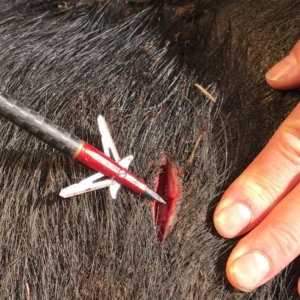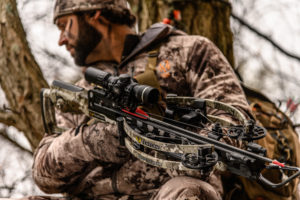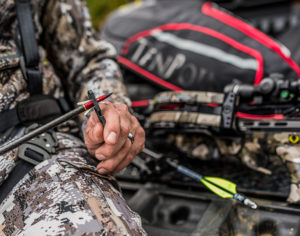6 Tips for Choosing the Best Crossbow Broadhead
Brian Flaherty / April 7th, 2020The number of broadheads offered for hunting crossbows on the market these days has become mind-boggling. With so many options, you may find it difficult to figure out which one out of the many will fly the best out of your hunting crossbow on your chosen crossbow bolt, while still achieving maximum penetration and lethal damage. Since there are so many to choose from, buying several and testing them can quickly become very expensive. The following tips will help you sort through the many crossbow broadheads out there to find the right one for your hunting crossbow setup, without having to spend a lot of money in the process.
Tip #1 – Contact Your Crossbow Manufacturer
Crossbow manufacturers want you to be successful with their hunting crossbows, so contacting the manufacturer is an excellent place to begin to narrow down the field of possible crossbow broadheads. Most manufacturers will give you a recommendation of two or three broadheads that they know will fly well out of your specific crossbow model, either from field experience or from internal testing. Now you can compare the performance of two or three broadheads and select the best one.
Tip #2 – Research As Much As You Can Before Buying
There is a lot you can learn about the material composition, method of manufacturing, and performance of your test group of crossbow broadheads before buying and shooting them. Most broadhead makers provide detailed information on their company websites, and many will have videos that show the performance of the broadhead in a test scenario or a real-life crossbow hunting situation. Check for reviews on archery blogs or on social media, as you will likely get honest, firsthand accounts (sometimes with photo or video examples) of well-performing and poor-performing crossbow broadheads.
Tip #3 – Only Buy Broadheads Rated for Use With Crossbows
Not all broadheads are made the same, and you should always use a broadhead made specifically for use with crossbows. Due to the high performance of modern hunting crossbows, broadheads are often designed differently, or require the use of special collars or rubber bands to shoot accurately. Always check the packaging to make sure that you have a crossbow-rated version.
Tip #4 – Consider Aerodynamics, Wound-Channel Surface Area, and Penetration
Broadheads are primarily judged based on three criteria: aerodynamics, wound channel surface area, and penetration. For you to use a crossbow broadhead in the field, it must perform well in respect to all three areas. In other words, if the broadhead flies well and has a large cutting surface area, but does not penetrate well, you should not use it. As a hunter, you have an ethical responsibility to use the broadhead and crossbow bolt combination that you feel will help you to make the surest, quickest, and most effective harvest of an animal. A broadhead that has large blades may have the potential to cut a large surface area, but if it exhibits limited penetration, then the cutting surface area is diminished. Choose a broadhead that has large blades that cut a large surface area, but that also has blades small enough to allow the crossbow bolt to maintain enough energy to penetrate completely through the animal, thereby maximizing tissue and organ damage.
Tip #5 – Narrow Down Your Options
After researching the damage and penetration performance of the recommended broadheads, you can now narrow the best possible candidates down to two. You should be confident that you have chosen a blade design that will inflict the maximum amount of damage, while at the same time the crossbow broadhead is constructed to yield maximum penetration. You are now ready to purchase these two broadheads and conduct the final comparison: aerodynamic performance.
Tip #6 – Shoot the Broadheads to Make the Final Determination
The last step is comparing the aerodynamic performance of the broadheads by shooting them. Be sure that you have an appropriate target that is rated for crossbows when you are checking how they fly, as the wrong kind of target can damage your crossbow broadheads and can skew flight performance results. Pick the broadhead that most closely matches the size of the groups and location of your crossbow bolts shot with field points, since shooting that broadhead will require minimal sight adjustment to re-zero, and helps to ensure your accuracy in the field — especially on long shots.





